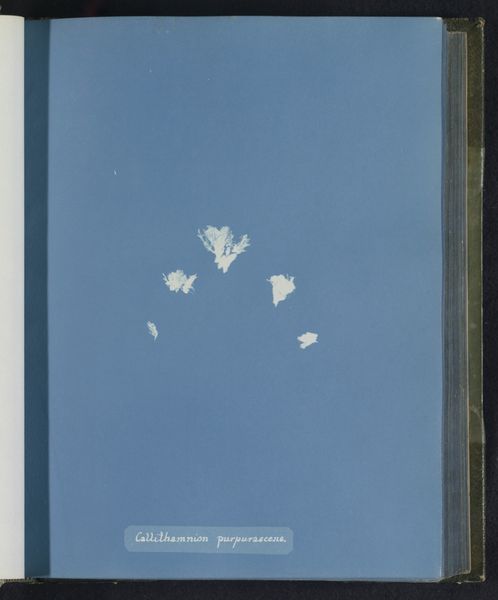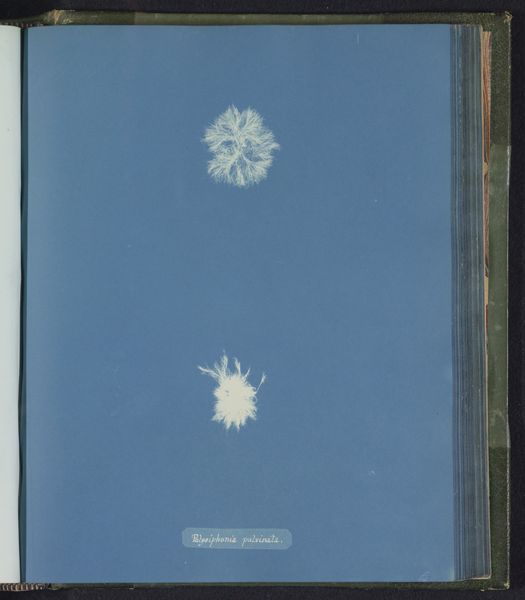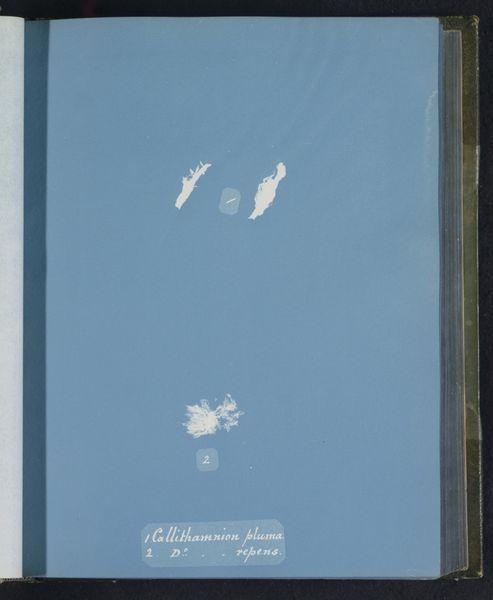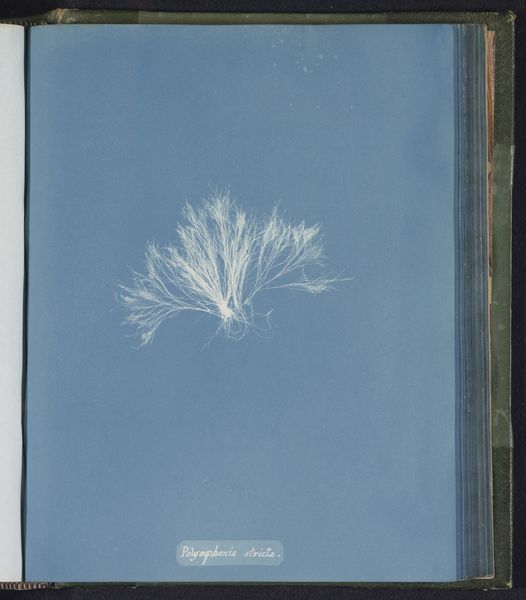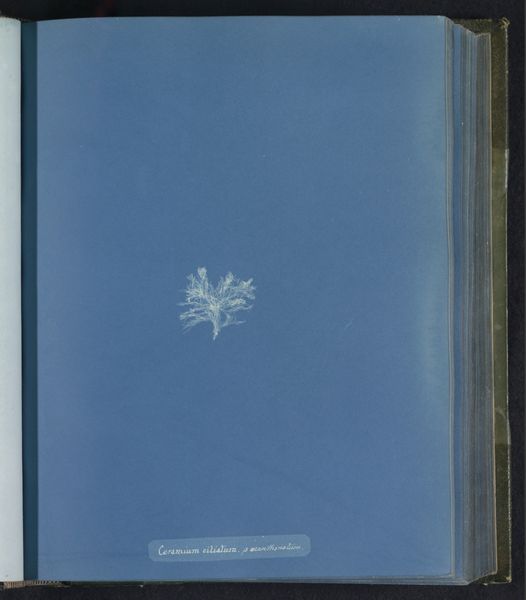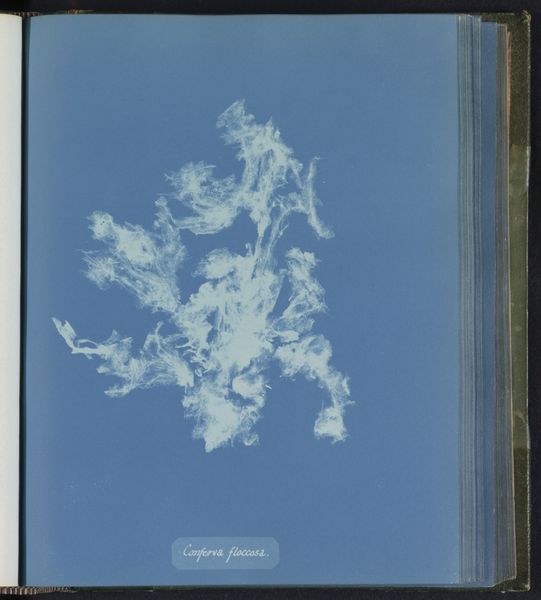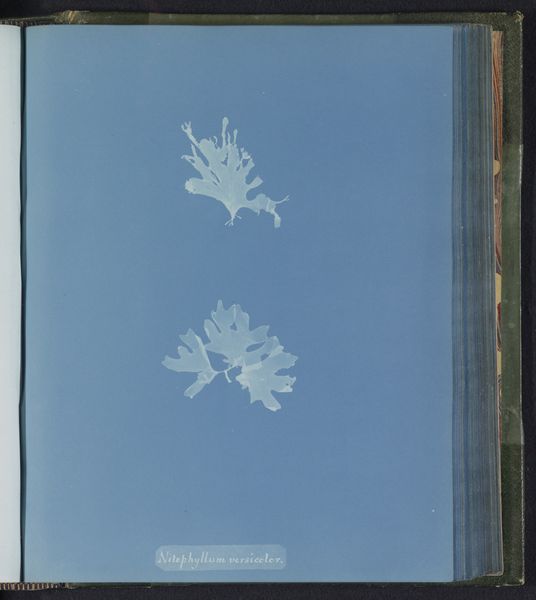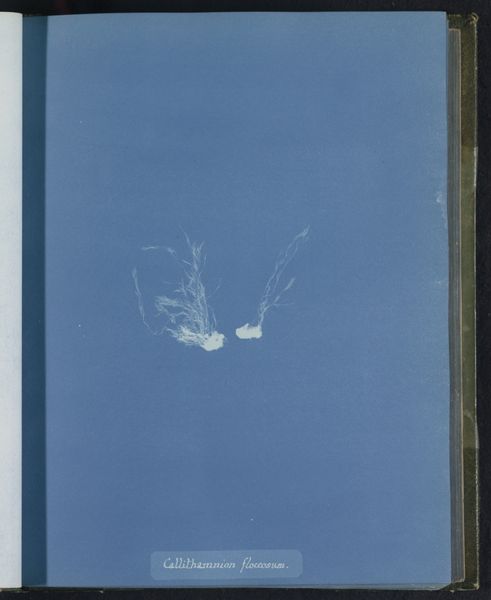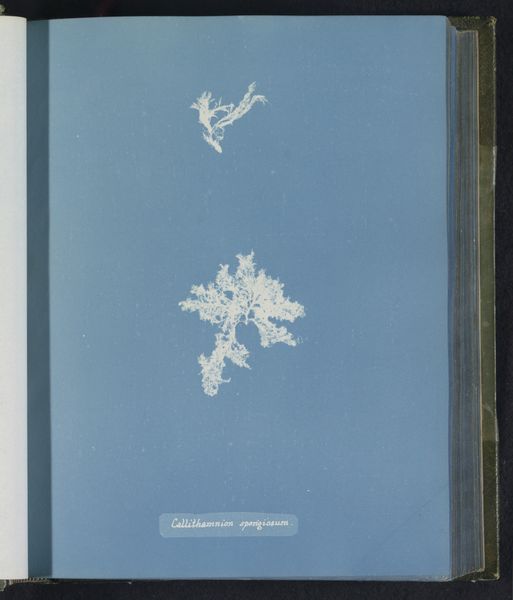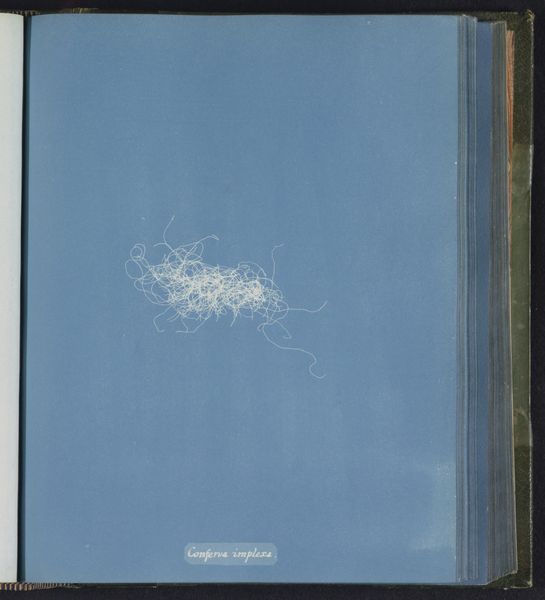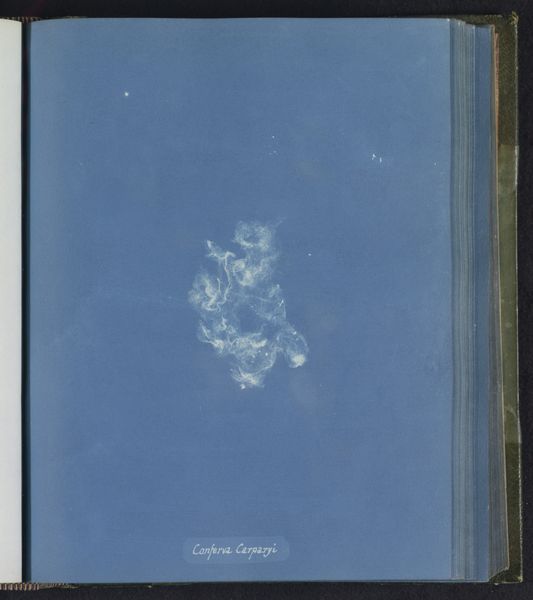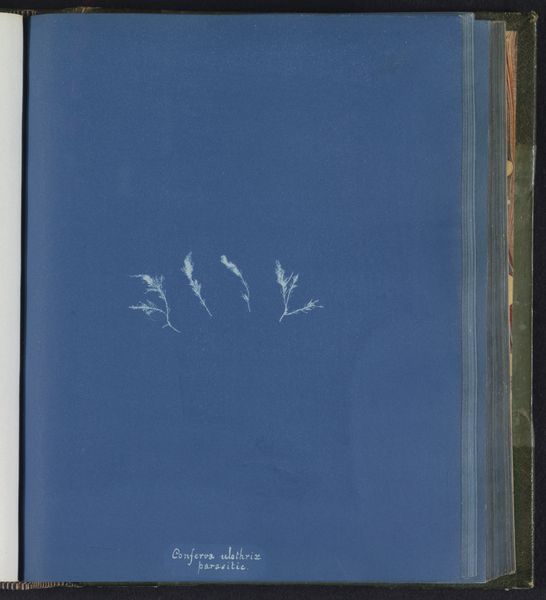![Callithamnion rothii [&] D[itt]o floridulum by Anna Atkins](/_next/image?url=https%3A%2F%2Fd2w8kbdekdi1gv.cloudfront.net%2FeyJidWNrZXQiOiAiYXJ0ZXJhLWltYWdlcy1idWNrZXQiLCAia2V5IjogImFydHdvcmtzLzg0OGNhODdjLTAzOTItNDY1OC1iZjM1LTc0NmFhNDE4ODg5OS84NDhjYTg3Yy0wMzkyLTQ2NTgtYmYzNS03NDZhYTQxODg4OTlfZnVsbC5qcGciLCAiZWRpdHMiOiB7InJlc2l6ZSI6IHsid2lkdGgiOiAxOTIwLCAiaGVpZ2h0IjogMTkyMCwgImZpdCI6ICJpbnNpZGUifX19&w=3840&q=75)
print, paper, cyanotype, photography, watercolor
#
still-life-photography
# print
#
paper
#
cyanotype
#
photography
#
watercolor
#
watercolour illustration
#
naturalism
#
watercolor
Dimensions: height 250 mm, width 200 mm
Copyright: Rijks Museum: Open Domain
Curator: The piece before you, dating from around 1843 to 1853, is titled "Callithamnion rothii [&] D[itt]o floridulum," created by Anna Atkins. She employed cyanotype, a photographic printing process, using paper and watercolor. What's your initial take? Editor: My first thought? Ethereal. It's like gazing up at clouds on a summer day, wisps of white against that dreamy blue. There's a peaceful quietness about it, a serenity that almost feels… otherworldy. Curator: Indeed. Atkins was a British botanist and photographer, often credited with creating the first book illustrated with photographic images. This print stems from her work documenting algae species. Her practice intersects with the burgeoning scientific documentation of the natural world and photography’s emergence as a scientific tool. Editor: Ah, so those ethereal wisps are actually meticulously captured algae? That changes things slightly, gives it a grounded feeling. I can almost smell the sea now. Still, there’s something so…artful about it, more than just pure documentation. It feels like she’s capturing the soul of the plant, not just its shape. Curator: Absolutely, the artistic interpretation coexists with the scientific rigor. While Atkins aimed to classify and present accurate botanical specimens, the cyanotype process inherently imbued the work with a distinctive aesthetic quality. The monochrome blue, the delicate silhouettes, create an aesthetic that moves beyond strict scientific rendering. Editor: The deep blue almost makes them float, doesn’t it? It removes them from any context, so you’re just left with their pure form. It really is lovely how science and art blur. The way it kind of looks aged and worn out too adds a certain charm and shows its long life. You feel like you are viewing some deep past. Curator: And we have to remember, in this period photography itself was nascent, still emerging from a space of chemical experiment. Photography was viewed simultaneously as a new scientific instrument, and a mode of image production—and thus became hotly contested between scientific and artistic spheres. Editor: So, what started as a botanical record accidentally blossomed into art? What a lovely historical accident. I'll certainly think twice now whenever I come across algae on a shoreline. Curator: It reveals the entanglement of scientific exploration and artistic expression inherent in early photographic practices. Hopefully, our listeners are encouraged to consider this complex interplay in what might at first appear simply a scientific document.
Comments
No comments
Be the first to comment and join the conversation on the ultimate creative platform.
